Cleaning burnt food off a ceramic pan can be a challenging task, yet understanding the right techniques can make it manageable. Ceramic pans are favored for their non-stick surfaces and aesthetically pleasing designs, but burnt food residues can still adhere if not correctly handled. To maintain the pan’s integrity and prolong its lifespan, specific cleaning methods should be used.
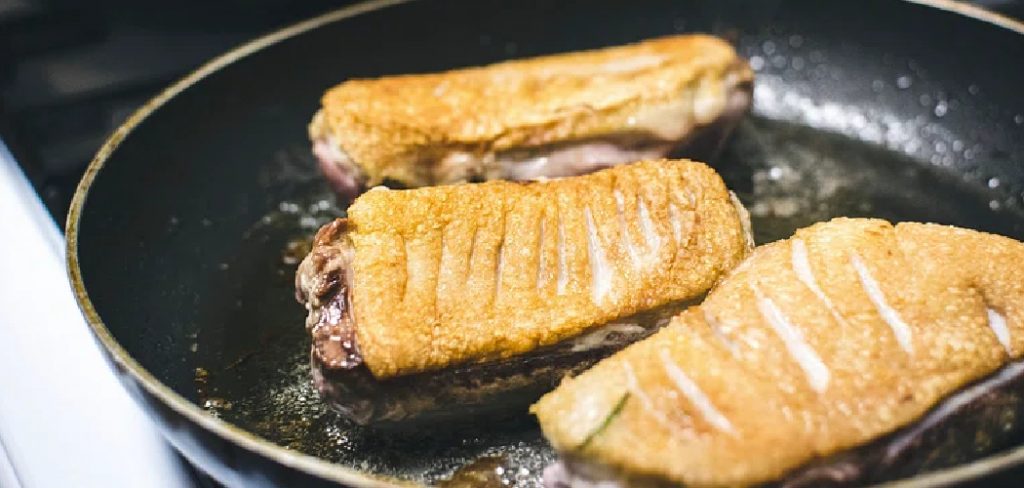
In this guide on how to get burnt food off ceramic pan, we’ll explore effective and safe ways to remove burnt food from ceramic pans using common household items and gentle cleaning techniques. Whether you’re a seasoned chef or a novice in the kitchen, these tips will help keep your ceramic cookware in pristine condition.
Understanding Ceramic Pans
Ceramic pans are a popular choice in many kitchens due to their sleek appearance and efficient cooking surface. Unlike traditional non-stick pans that use a Teflon coating, ceramic pans are coated with a silica-based gel derived from sand, which is free of PTFE and PFOA chemicals. This makes them an eco-friendly option that many health-conscious cooks prefer. The natural non-stick properties of ceramic allow for easy food release, reducing the need for excessive oil or butter during cooking.
However, it’s essential to handle them with care to avoid scratches and damage, as ceramic coatings can be more delicate than other types. Proper use, such as avoiding high heat and using non-abrasive utensils, will help maintain their optimal performance. When it comes to cleaning, take extra care to avoid harsh chemicals or abrasive tools that can strip off the ceramic layer and damage the pan.
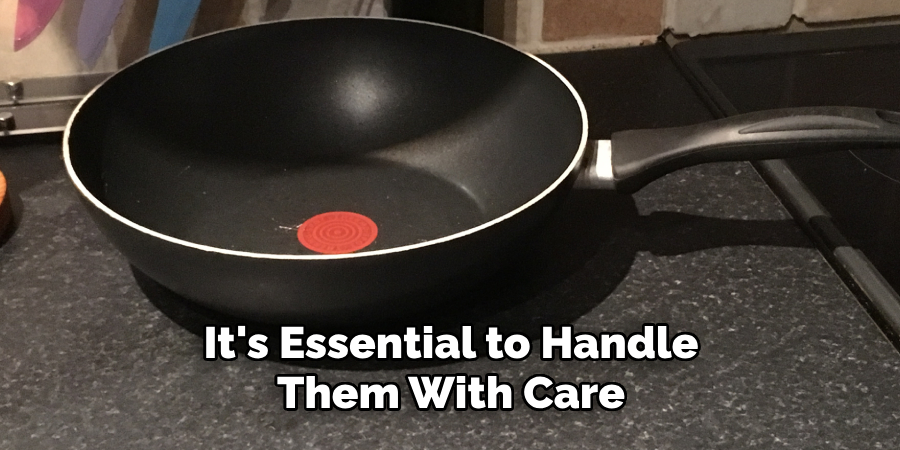
8 Simple Step-by-step Guidelines on How to Get Burnt Food Off Ceramic Pan
Step 1: Soak in Hot Water
Begin by filling the ceramic pan with hot water, ensuring that the water completely covers the burnt food areas. Allow the pan to soak for at least 30 minutes. This step helps to loosen the burnt residues, making it easier to clean.
For tougher stains, you can add a small amount of dish soap to the water to help break down any remaining grease and food particles. Avoid using boiling water, as sudden temperature changes can potentially damage the ceramic coating. After soaking, gently pour out the water and prepare for the next cleaning steps.
Step 2: Use Baking Soda and Vinegar
Baking soda is a multi-purpose household item that works great for cleaning burnt food off ceramic pans. Sprinkle a generous amount of baking soda on the affected areas, followed by adding enough vinegar to create a bubbling reaction. The carbon dioxide produced by this mixture will help break down the burnt food residues, making them easier to lift off.
Leave the mixture on for about 15 minutes before scrubbing with a non-abrasive sponge or brush. This method is gentle yet effective in removing tough stains without damaging the pan’s surface.
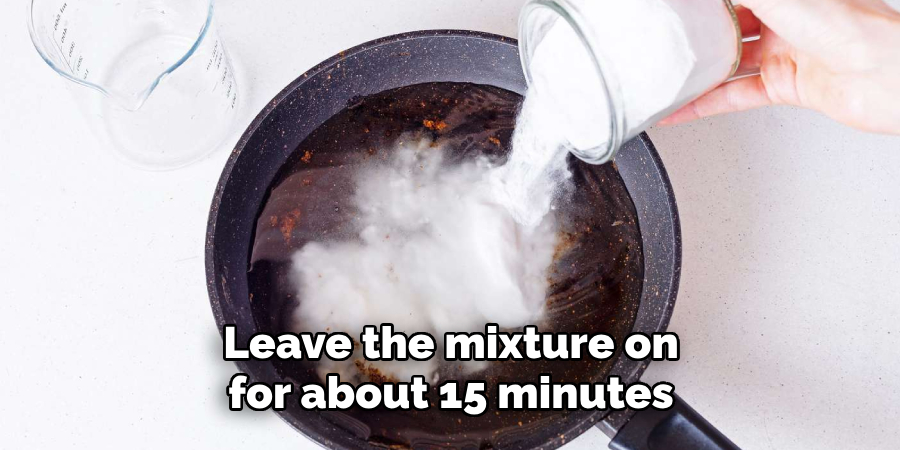
Step 3: Try Lemon and Salt
Lemon has natural acidic properties that can help remove burnt food from ceramic pans. Slice a lemon in half and sprinkle some salt onto the cut surface. Use this as a scrubber to gently rub the affected areas of the pan. The combination of citric acid and abrasive salt will help lift off the burnt residues without scratching or damaging the ceramic coating.
It’s also a great way to remove any lingering odors from the pan. The fresh scent of lemon will leave your pan smelling clean and refreshed.
Step 4: Make a Paste with Water and Cream of Tartar
Cream of tartar, also known as potassium bitartrate, is another useful ingredient for cleaning burnt-on food from ceramic pans. Combine equal parts water and cream of tartar to create a paste-like consistency. Apply this paste onto the affected areas and let it sit for about 30 minutes before rinsing off.
The acidic properties of cream of tartar will help break down the burnt food, making it easier to remove with a sponge or brush.
Step 5: Use Dish Soap and Dryer Sheet
For pans with stubborn burnt-on food residues, you can try this trick using dish soap and a dryer sheet. Fill the pan with hot water and add a few drops of dish soap. Place a dryer sheet on top of the water and let it soak for at least an hour. The combination of dish soap and fabric softener in the dryer sheet helps loosen the food particles from the pan’s surface.
After soaking, use the dryer sheet to scrub off any remaining burnt food, then rinse thoroughly.
Step 6: Create a Baking Soda and Hydrogen Peroxide Paste
Hydrogen peroxide is a powerful cleaning agent that can help remove stubborn burnt food from ceramic pans. Make a paste using equal parts baking soda and hydrogen peroxide, then apply it to the affected areas of the pan. Let it sit for about 15 minutes before scrubbing with a non-abrasive sponge or brush. The fizzing reaction will help lift off the burnt food residues, leaving your pan clean and shiny.
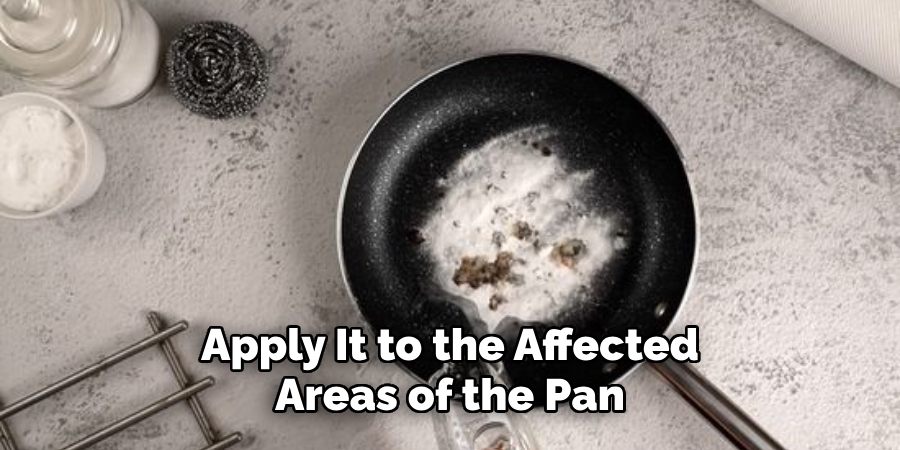
The combination of baking soda and hydrogen peroxide is also great for removing any stains or discoloration from the pan’s surface.
Step 7: Use a Magic Eraser
Magic erasers are an incredibly useful tool for cleaning all types of surfaces, including ceramic pans. Wet the magic eraser and gently scrub the burnt food residues on your pan. The abrasive texture will help lift off the stubborn particles without damaging the ceramic coating.
Be sure to rinse thoroughly after using a magic eraser to remove any residue or debris from the pan.
Step 8: Try Barkeeper’s Friend
Barkeeper’s Friend is a gentle yet effective cleaner that can be used on various surfaces, including ceramic pans. Make a paste with water and Barkeeper’s Friend and apply it to the affected areas of your pan. Let it sit for about 10 minutes before scrubbing with a non-abrasive sponge or brush. Rinse thoroughly to remove any remaining residue.
This method on how to get burnt food off ceramic pan is particularly useful for removing tough stains and discoloration from ceramic pans.
Storage Tips for Ceramic Pans
Proper storage of ceramic pans is essential to maintaining their quality and longevity. Here are some helpful tips:
Avoid Stacking Without Protection:
When stacking ceramic pans, place a soft cloth, felt liner, or paper towel between each pan to prevent scratches and chips on the non-stick surface.
Choose a Designated Storage Area:
Store ceramic pans in a cool, dry place away from direct sunlight. Excessive heat or moisture can lead to deterioration of the ceramic coating over time.
Hang for Safety:
If you have adequate space, consider hanging the pans on a pot rack. This not only prevents stacking damage but also allows for easy access.
Use Dedicated Shelves or Cabinets:
Reserve a specific shelf or cabinet exclusively for your ceramic cookware to minimize stacking and allow quick identification.
By following these storage tips on how to get burnt food off ceramic pan, you can ensure that your ceramic pans remain in excellent condition, providing consistent cooking performance whenever you use them.
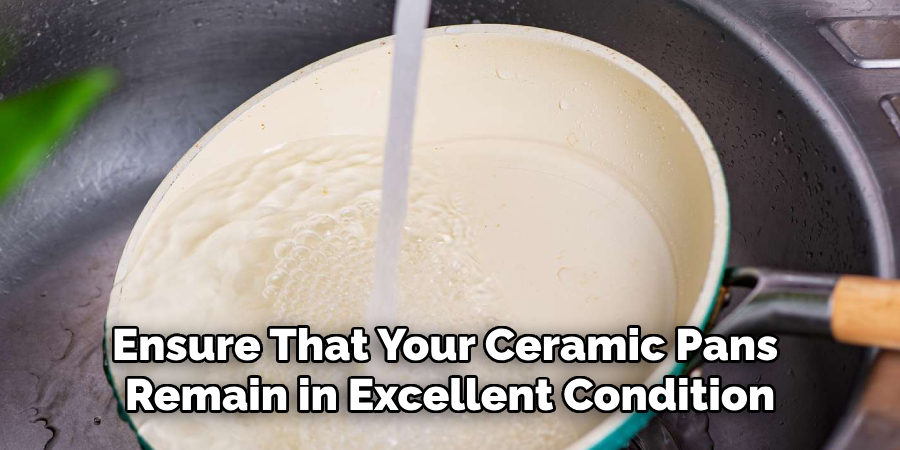
Frequently Asked Questions
Q: Can I Use Metal Utensils on a Ceramic Pan?
A: It’s best to avoid using metal utensils on ceramic pans as they can scratch and damage the delicate coating. Opt for non-abrasive utensils, such as silicone or wooden ones.
Q: Can I Put My Ceramic Pan in the Dishwasher?
A: While many ceramic pans are dishwasher safe, it’s best to check the manufacturer’s instructions before putting your pan in the dishwasher. The high heat and harsh chemicals of some dishwashers can potentially damage the ceramic coating.
Q: How Do I Prevent Food from Burning on a Ceramic Pan?
A: To prevent food from burning on a ceramic pan, make sure to use medium to low heat and avoid leaving the pan unattended. It’s also helpful to add oil or butter before cooking and using non-stick spray for extra protection against sticking.
Q: Can I Use Oven Cleaner on a Ceramic Pan?
A: It’s not recommended to use oven cleaner on ceramic pans as it can be too harsh and damage the coating. Stick to using gentler cleaning methods as outlined in this guide. It’s also essential to properly rinse off any cleaning products before using the pan again for cooking.
Q: How Often Should I Clean My Ceramic Pan?
A: It’s recommended to clean your ceramic pan after each use. This will prevent any buildup of food particles and keep the pan in good condition for longer.
Conclusion
With these simple steps, you can easily get burnt food off your ceramic pan without damaging its delicate coating.
Remember to always use gentle cleaning methods on how to get burnt food off ceramic pan and avoid harsh chemicals or abrasive tools that can cause scratches or wear down the ceramic layer. By taking good care of your ceramic cookware, you can ensure it stays in pristine condition for years to come. Happy cooking!
Specialization:
- Master of wheel-throwing, hand-building, and advanced glazing techniques
- Focus on creating both functional pottery and decorative art pieces
Recognition:
- Celebrated by collectors and art enthusiasts for creating one-of-a-kind pieces that blend artistry with functionality
- Participates in local and national exhibitions, earning accolades for his innovative designs and craftsmanship
Passion:
- Deeply committed to exploring and pushing the boundaries of ceramic artistry
- Continuously experiments with new materials, firing techniques, and artistic concepts to evolve his craft
Personal Philosophy:
- Believes in the transformative power of art, aiming to evoke emotions and connections through his ceramic creations
- Advocates for sustainability in ceramics, using eco-friendly materials and practices whenever possible


